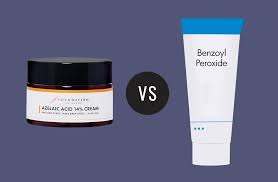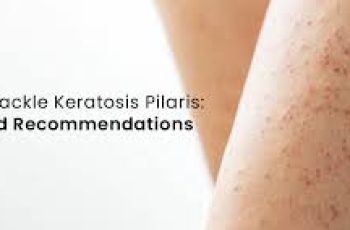
Azelaic Acid vs Benzoyl Peroxide for Acne: What You Need to Know
When it comes to managing acne, two ingredients often come up in skincare discussions—azelaic acid and benzoyl peroxide. But what sets them apart?
Both are proven acne-fighting ingredients with powerful benefits. Yet, they work in very different ways and suit different skin types.
In this article, we’ll explore how azelaic acid and benzoyl peroxide compare. We’ll break down their similarities, key differences, and help you decide which is best for your skin.
What Is Azelaic Acid?
Azelaic acid is a naturally occurring dicarboxylic acid found in grains like barley, wheat, and rye.
It offers antimicrobial, anti-inflammatory, antioxidant, and exfoliating properties, making it a go-to solution for various skin conditions.
Dermatologists often recommend azelaic acid for:
Acne, Rosacea, Hyperpigmentation,Skin texture issues, Hormonal breakouts
It’s also known to brighten the skin, refine pores, and reduce redness caused by irritation or inflammation.
Key Benefits of Azelaic Acid
Azelaic acid is a multitasker. Here are its major benefits:
Kills acne-causing bacteria on the skin
Minimizes hormonal acne breakouts
Brightens skin and fades dark spots
Exfoliates by unclogging pores and removing dead cells
Reduces inflammation and calms redness
Helps reduce post-acne hyperpigmentation
Triggers collagen production to improve skin texture
Has antioxidant effects that fight free radicals
Safe for sensitive skin types and all skin tones
It’s often recommended as a gentle alternative to stronger actives like retinoids or benzoyl peroxide.
What Is Benzoyl Peroxide?
Benzoyl peroxide is a topical antiseptic that treats acne by killing bacteria. It works by releasing oxygen free radicals that destroy Cutibacterium acnes, the main bacteria behind breakouts.
In addition to its antibacterial power, benzoyl peroxide also:
Reduces excess oil (sebostatic), Unclogs pores (keratolytic), Eases redness and swelling, Helps with inflammatory acne, Fights surface-level bacteria on the skin
It’s a common ingredient in over-the-counter acne creams, gels, cleansers, and spot treatments.
Key Benefits of Benzoyl Peroxide
Here’s why benzoyl peroxide remains a dermatologist favorite for acne:
Kills acne-causing bacteria effectively, Reduces oil and helps shrink pores, Soothes inflammation and redness, Exfoliates dead skin and unclogs pores, Fast results for active breakouts
Useful for mild to moderate acne, Often paired with other treatments like adapalene
However, it’s known to cause side effects like dryness, peeling, or irritation—especially for sensitive skin users.
Azelaic Acid vs Benzoyl Peroxide: How Are They Similar?
Though they work differently, azelaic acid and benzoyl peroxide share several similarities:
Both are clinically proven to treat acne
Both are effective against acne-causing bacteria
Both reduce redness and inflammation
Both exfoliate the skin and unclog pores
Both can improve skin texture with consistent use
Both are found in creams, gels, and prescription formulas
Both can help reduce the appearance of acne scars over time
Despite these similarities, they’re far from identical. Let’s explore their key differences.
How Are Azelaic Acid and Benzoyl Peroxide Different?
1. Skin Tolerance
Azelaic acid is gentler and well-suited for sensitive skin.
Benzoyl peroxide is stronger but can cause irritation, dryness, and peeling.
2. Sun Sensitivity
Azelaic acid does not increase sun sensitivity.
Benzoyl peroxide can make skin more sensitive to UV rays.
3. Antioxidant Properties
Azelaic acid is an antioxidant, protecting skin from free radicals.
Benzoyl peroxide generates free radicals, which may damage skin with long-term use.
4. Bleaching Effect
Azelaic acid doesn’t bleach fabrics or hair.
Benzoyl peroxide may bleach towels, pillowcases, or clothing if not used carefully.
5. Anti-aging Potential
Azelaic acid promotes collagen production and improves skin tone.
Benzoyl peroxide has no anti-aging benefits and may accelerate signs of aging over time.
Which One Is More Effective for Acne?
Studies show azelaic acid is equally effective as benzoyl peroxide in treating mild to moderate acne. But they shine in different situations:
Use benzoyl peroxide for active, inflamed breakouts and oily skin.
Use azelaic acid for redness, dark spots, hormonal acne, or sensitive skin.
If your skin cannot tolerate strong treatments, azelaic acid is a better first choice.
Can You Use Azelaic Acid and Benzoyl Peroxide Together?
Yes, you can use both in the same skincare routine, but with caution.
Some studies show that combining them may boost results and reduce side effects associated with benzoyl peroxide.
Azelaic acid’s antioxidant properties may also neutralize the free radicals generated by benzoyl peroxide.
How to layer them:
AM Routine:
Cleanser, Benzoyl peroxide (thin layer), Azelaic acid (after BP dries), Moisturizer, Sunscreen
PM Routine (optional if skin is not irritated):
Use azelaic acid only, or alternate days with benzoyl peroxide.
Avoid over-exfoliating or combining with other actives like retinol unless advised by a dermatologist.
When Should You Choose Azelaic Acid?
Choose azelaic acid if you:
Have sensitive skin or rosacea
Need help with hyperpigmentation or acne scars
Are prone to hormonal acne
Want an acne treatment that’s gentle but effective
Prefer ingredients that also offer anti-aging benefits
Want to even skin tone without causing irritation
When Should You Choose Benzoyl Peroxide?
Go for benzoyl peroxide if you:
Have persistent, inflamed, or cystic acne
Need something that works quickly on breakouts
Have oily or thick skin
Want a powerful antibacterial treatment
Don’t mind some temporary dryness or flaking
Side Effects: What to Watch Out For
Azelaic Acid
Mild stinging or tingling
Rare redness or itching
Very low risk of allergic reaction
Safe during pregnancy (FDA Category B)
Benzoyl Peroxide
Dryness, peeling, and tightness
Redness or skin irritation
Fabric bleaching
Higher risk of sun sensitivity
Not ideal for sensitive skin types
Can You Use Either During Pregnancy?
Azelaic acid is generally safe for use during pregnancy in small amounts on facial skin. It’s FDA Category B.
Benzoyl peroxide may be safe in limited use but always consult your doctor first. It should be avoided in large amounts or over wide areas.
Recommended Products Featuring These Ingredients
Azelaic Acid 14% Cream (Foundation Skincare)
High-strength, non-prescription formulation
Brightens skin, fades spots, and soothes inflammation
Hydrating cream base layers well with other products
Benzoyl Peroxide 2.5%-10% Treatments
Look for lower concentrations if you’re new to BP
Best applied as a spot treatment or in leave-on gels
Use a non-comedogenic moisturizer afterward
Other Skincare Additions to Consider
Niacinamide (10%): Calms irritation and supports skin barrier
Hyaluronic Acid: Locks in hydration and prevents dryness
Granactive Retinoid: Boosts collagen and helps reduce acne
Gentle Cleanser: Avoids stripping the skin’s barrier
These products can complement either ingredient and support overall skin health.
Conclusion: Which Is Right for You?
Both azelaic acid and benzoyl peroxide are effective at treating acne—but their tolerability, benefits, and side effects are different.
Azelaic acid is gentler, works well for multiple skin concerns, and has antioxidant and anti-aging benefits.
Benzoyl peroxide is stronger, kills bacteria fast, and works best for oily, breakout-prone skin that can tolerate a bit of dryness.
If you’re unsure where to start, try azelaic acid first. It’s easier on the skin and delivers results over time.
If you need a stronger approach, consider adding benzoyl peroxide as a spot treatment or alternating between the two.


